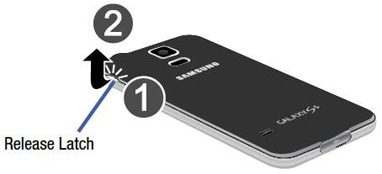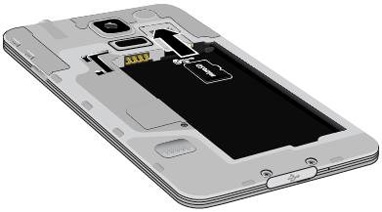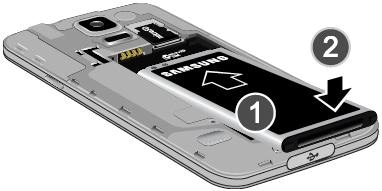How to install or change a SIM or SD memory card on Galaxy phone
Depending on your Galaxy device, it may be able to take SIM cards and memory cards. New smartphones and 4G compatible tablets take nano-SIM cards, while the maximum memory card capacity differs by model.
The location of the SIM and memory card slots will change depending on your model but can be easily located by carefully looking at the sides of your device.
If you are inserting a new memory card you can find out more about how to use it and how to move files and images.
Please note: to prevent damage to any information stored on a memory card, make sure that it is unmounted before taken out
The steps below explain how to insert a SIM or memory card, no matter what type. Before you insert a SIM or memory card you should make sure you are inserting the right size card to ensure it does not get damaged or get stuck in your device.
Devices with a fixed battery

Your SIM tray may differ depending on your model, but you will be able see where each card goes by looking at the markings and symbols on the tray. Not all devices allow for two SIMs, or a memory card.
Please note: the SIM tray provided with S21 models is a new design that takes one SIM card on the front and another on the back. Find out more about installing a SIM card on an S21

Please note: if your SIM card is the wrong size for your SIM tray, please contact your network provider for more assistance

Devices with a removable battery

Please note: the SD card slot is on the bottom and the microSD card slot is directly above it. Make sure you are using the correct slot.


Before removing a memory card, you should first unmount it to prevent any damage and loss of data. This is not required when removing a SIM card.
Unmounting an SD card
If you do not see this option, tap the More options icon, it will appear as three dots. Then tap Storage settings. You should now be able to tap SD card.
Then, remove the SIM or memory card from the slot. For devices with a removable battery, follow the steps in 'Inserting a SIM or memory card.'
Removing a SIM or memory card
Nano SIMs are the most used SIM in newer (2014 and onwards) smartphones. Micro SIMs were most used before that.
The main difference between a Nano and a Micro SIM is the size of the plastic around the microchip. Most mobile networks now provide a single adjustable card that you can snap out of the plastic to the correct size.

An SD or memory card is a digital storage card you can use to expand storage space on your device. SD is short for Secure Digital.
SD cards come in different sizes. The most common are standard SD cards and micro SD cards.
Most smartphones and tablets with expanded storage capability take micro SD cards. Find out more about how to use an SD card with your device.
Memory cards are available to purchase from most digital retailers, online, or in supermarkets. Be aware that while cheaper memory cards can save you money in the short term, they are more likely to become corrupted and lose your data and images.
You can look online at memory cards available from Samsung.
What is the difference between SDHC and SDXC?
SD cards come in a range of storage capacities including SDHC (Secure Digital High Capacity) and SDXC (Secure Digital Extended Capacity).
Class transfer speed refers to the speed of reading and writing images. The transfer speed will be designated by a class and not whether it is SD, SDHC or SDXC.
If you're experiencing unusual behaviour on Samsung mobiles, tablets or wearables, you can send us an error report or ask us a question in the Samsung Members app.
This allows us to take a closer look at what is happening. The data is anonymised and only held for the duration of the investigation. Find out more about sending an error report through the Samsung Members app.
Thank you for your feedback!
Please answer all questions.